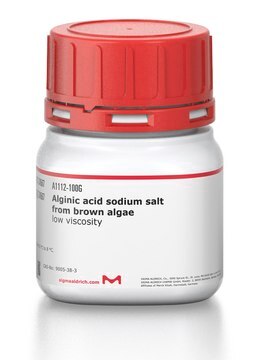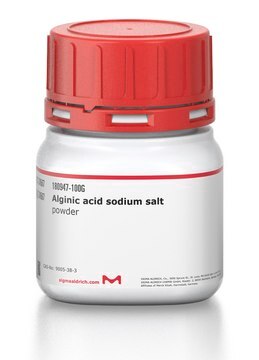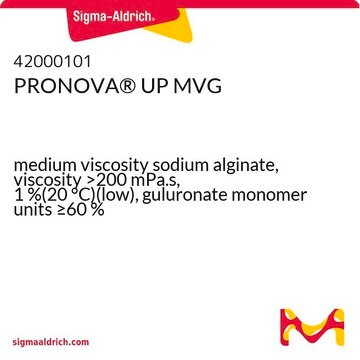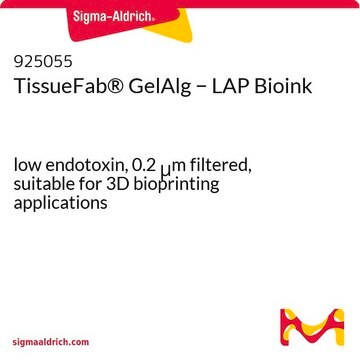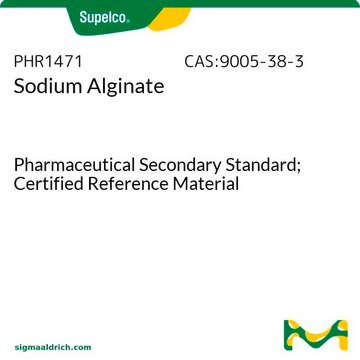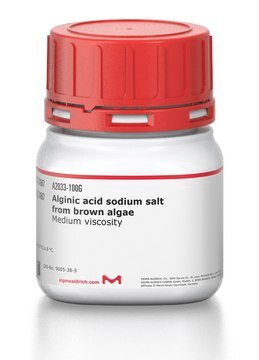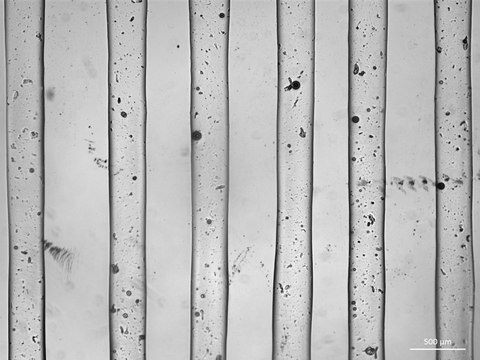918652
Low endotoxin alginate solution
Medium viscosity, 0.2 μm, sterile-filtered
Synonym(e):
Alginic acid, Sodium alginate
About This Item
Empfohlene Produkte
Qualitätsniveau
Sterilität
sterile-filtered
Form
viscous liquid
Konzentration
1.75-3.50 wt. % in DPBS (buffer)
Verunreinigungen
<10 EU/g Endotoxin
<5 CFU/g Bioburden (Fungal)
<5 CFU/g Bioburden (Total Aerobic)
Farbe
colorless to pale yellow
Partikelgröße
0.2 μm
pH-Wert
6.5-7.5
Lagertemp.
2-8°C
Verwandte Kategorien
Anwendung
Alginate is an anionic polysaccharide that is widely used in pharmaceutical and biomedical applications due to its non-animal origin, low toxicity, biocompatibility, and biodegradability. Alginate hydrogels are commonly used to fabricate tissue engineering scaffolds, bioinks for 3D bioprinting, and nanocarriers for drug & gene delivery. Alginate is commonly crosslinked into a hydrogel via ionic-crosslinking with divalent cations (e.g., Ca2+).
Verpackung
WGK
WGK 2
Analysenzertifikate (COA)
Suchen Sie nach Analysenzertifikate (COA), indem Sie die Lot-/Chargennummer des Produkts eingeben. Lot- und Chargennummern sind auf dem Produktetikett hinter den Wörtern ‘Lot’ oder ‘Batch’ (Lot oder Charge) zu finden.
Besitzen Sie dieses Produkt bereits?
In der Dokumentenbibliothek finden Sie die Dokumentation zu den Produkten, die Sie kürzlich erworben haben.
Unser Team von Wissenschaftlern verfügt über Erfahrung in allen Forschungsbereichen einschließlich Life Science, Materialwissenschaften, chemischer Synthese, Chromatographie, Analytik und vielen mehr..
Setzen Sie sich mit dem technischen Dienst in Verbindung.
